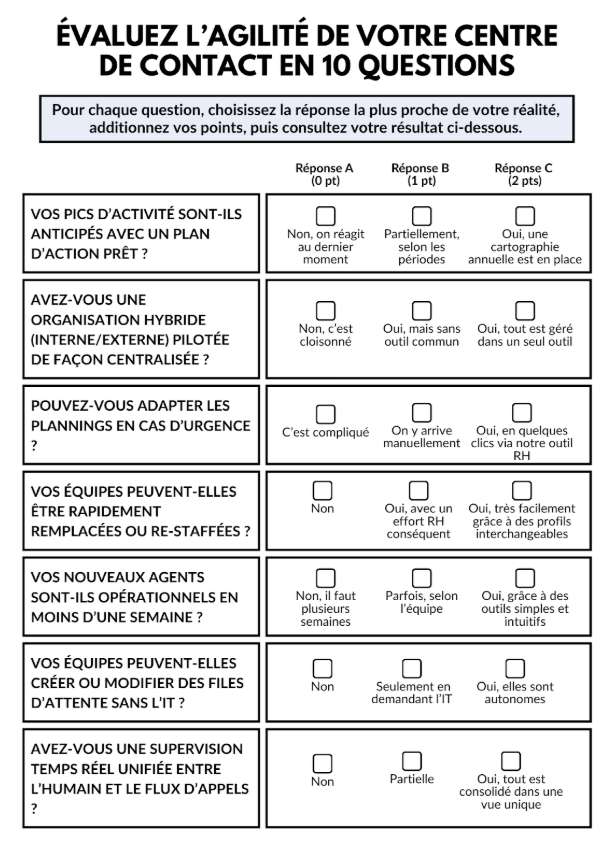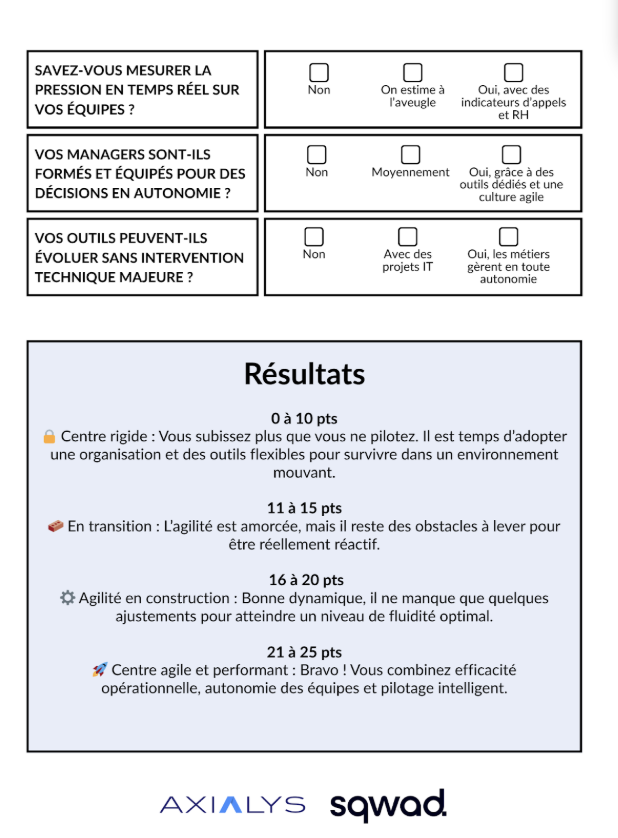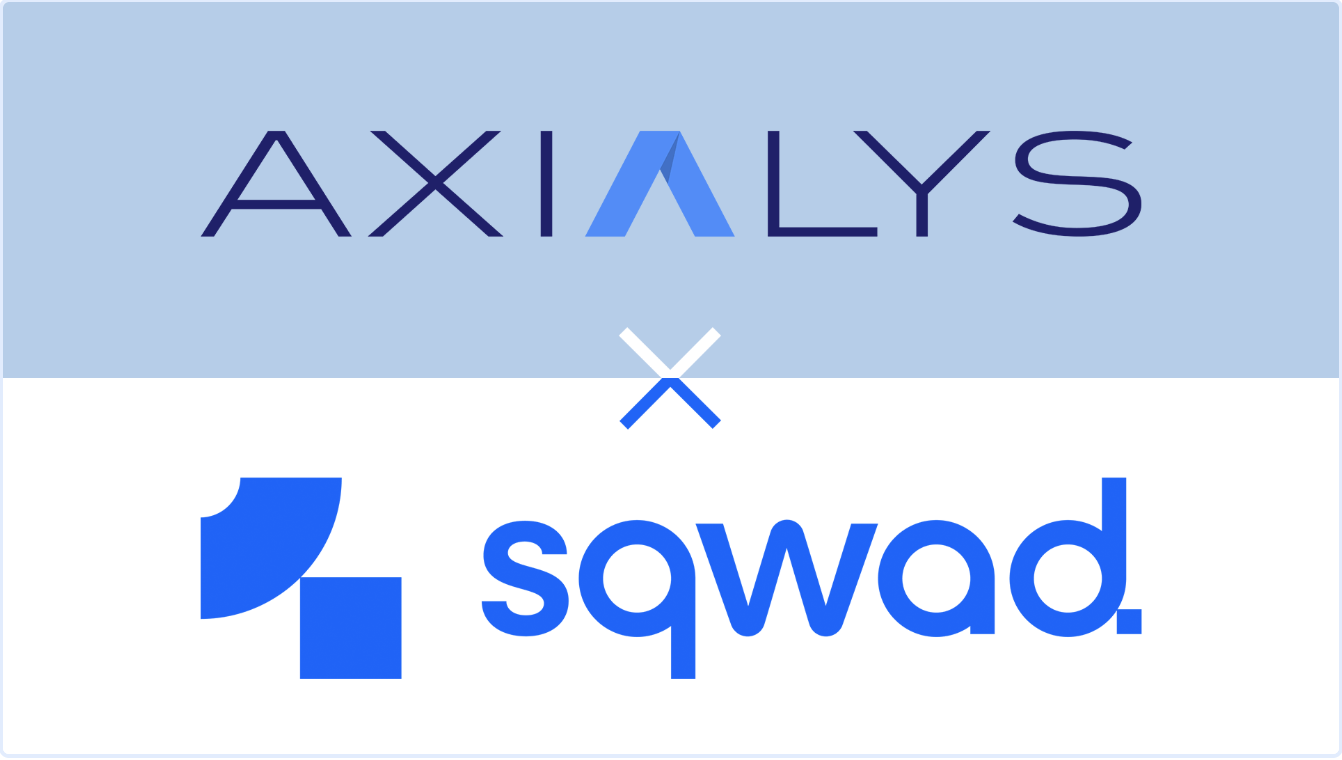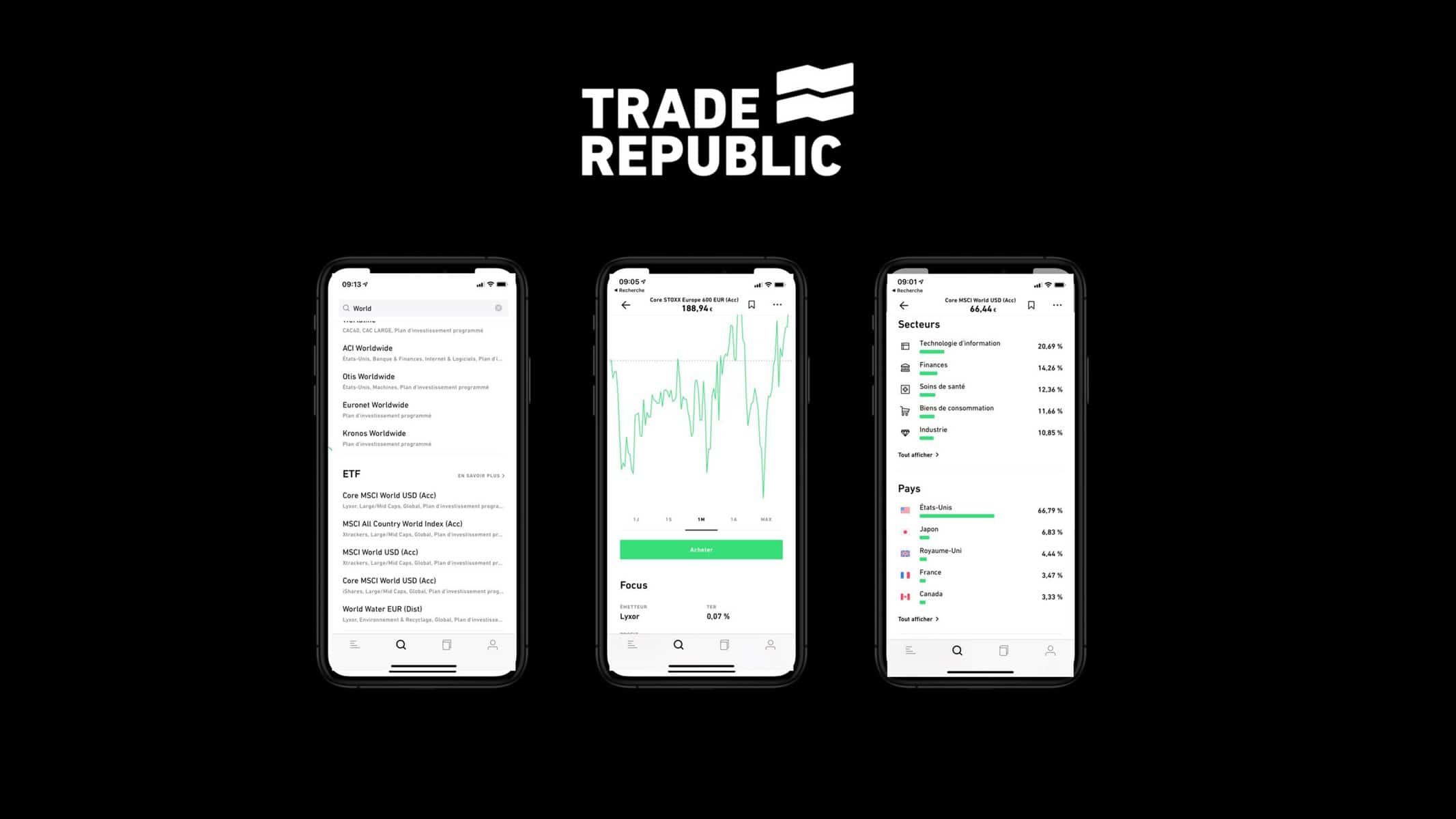Test: is your contact center (really) agile?
Answer these 10 questions, total your points, and find out your agility score. Then, explore the 6 key tips to make sustainable progress.


The 6 levers to sustainably strengthen the agility of your contact center
1. Anticipating peaks of activity: the essential mapping
Critical periods — such as sales, billing periods, school holidays — are known in advance. However, few organizations take the time to map them. However, fine foresight makes it possible toadjust resources, to adapt the call paths and to reassure the teams.
example : a tourism player has identified that the post-vacation Monday morning generates 30% more flows. By adapting his vocal path and his processing lines beforehand, he reduced his dropout rate by 25%.
2. Relying on an external partner to absorb the unexpected
A sick agent, a suddenly doubled volume of calls, an exploding marketing campaign... these hazards should no longer disorganize your teams. An agile contact center is based on organization capable of reacting quickly : redistribute the load, reallocate resources, maintain the quality of service.
That is exactly what allows a BPO like Sqwad : by working hand in hand with internal teams, it provides reactive and immediately operational resources (internal, external, occasional reinforcements), capable of covering unforeseen events without calling into question the existing organization.
3. Giving jobs more autonomy
Agility requires ability to adjust the organization without relying on heavy decision-making processes. When supervisors or platform managers can adapt their human system on the fly, the company gains in responsiveness and serenity.
example : in an industrial ETI, a customer service manager was able to absorb a series of unexpected absences by relying on a partner BPO who already knows the company's usual processes, tools and load peaks and had already sourced, in advance, profiles of advisors who could start quickly.
Today, some platforms such asAxialys allow modify the reception scenarios and IVR or the routing rules in a hot way, without using IT, which gives a real competitive advantage and real autonomy.
Also, some BPOs such as Sqwad are positioning themselves as real partners close by. In fact, they integrate into the ecosystem of their customers to offer them almost immediate, frictionless reactivity. This human agility allows businesses to regain control without necessarily mobilizing additional technical or HR resources.
4. Manage in real time, to arbitrate quickly and well
Having real-time indicators is essential. It is still necessary that these indicators are legible, contextualized and cross-referenced with the right HR data. The objective: to make the right decision at the right time.
That's where the Axialys supervision console provides real value: by centralizing key data (volume of calls in line, volume of calls in line, dropout rate, service level, etc.) and by making them accessible in real time to supervisors, it allows instant management, from a single screen.
5. Integrate and train more quickly, to always stay up and running
Operational agility also involves ability to integrate new agents quickly, without impacting the quality of service. An intuitive technical environment, accessible interfaces and tools that guide agents in their exchanges facilitate rapid skills development.
Every day lost between the arrival of an advisor and his full autonomy represents a risk for the quality of service. To reduce this delay, two elements are essential:
- Simple, intuitive and guiding tools : a clear telephone interface, contextualized scripts, and ergonomics designed for the daily life of advisers facilitate the development of skills, even for beginner profiles.
- An organization structured around operational training : the most effective customer relationship providers (BPOs) invest in continuing education, built on the basis of the client's concrete cases. This makes it possible to mobilize resources ready to intervene quickly, with a detailed understanding of business issues.
When technical tools are designed to be used without friction, and when teams, internal and external, share a common base of training and customer culture, The relay switch becomes fluid, even in an emergency.


.png)


.png)